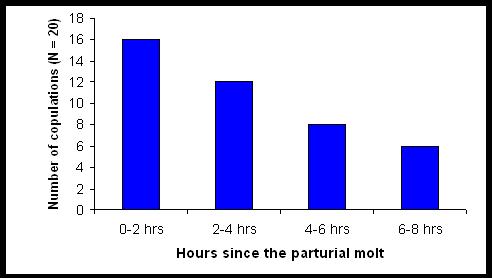Many shrimps mate just after
the female molts. In caridean shrimps, the female must have a mature
or "ripe" ovary, i.e., one full of eggs ready to spawn (this is a female
of Palaemonetes pugio,
a common brackish-water "grass" shrimp in the U.S. Gulf of Mexico, a good
model organism to study mating and sex attraction)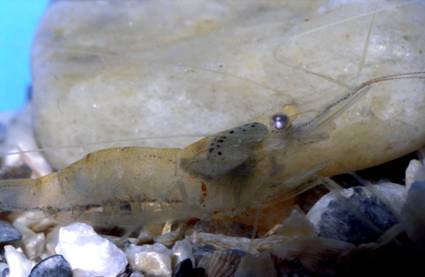
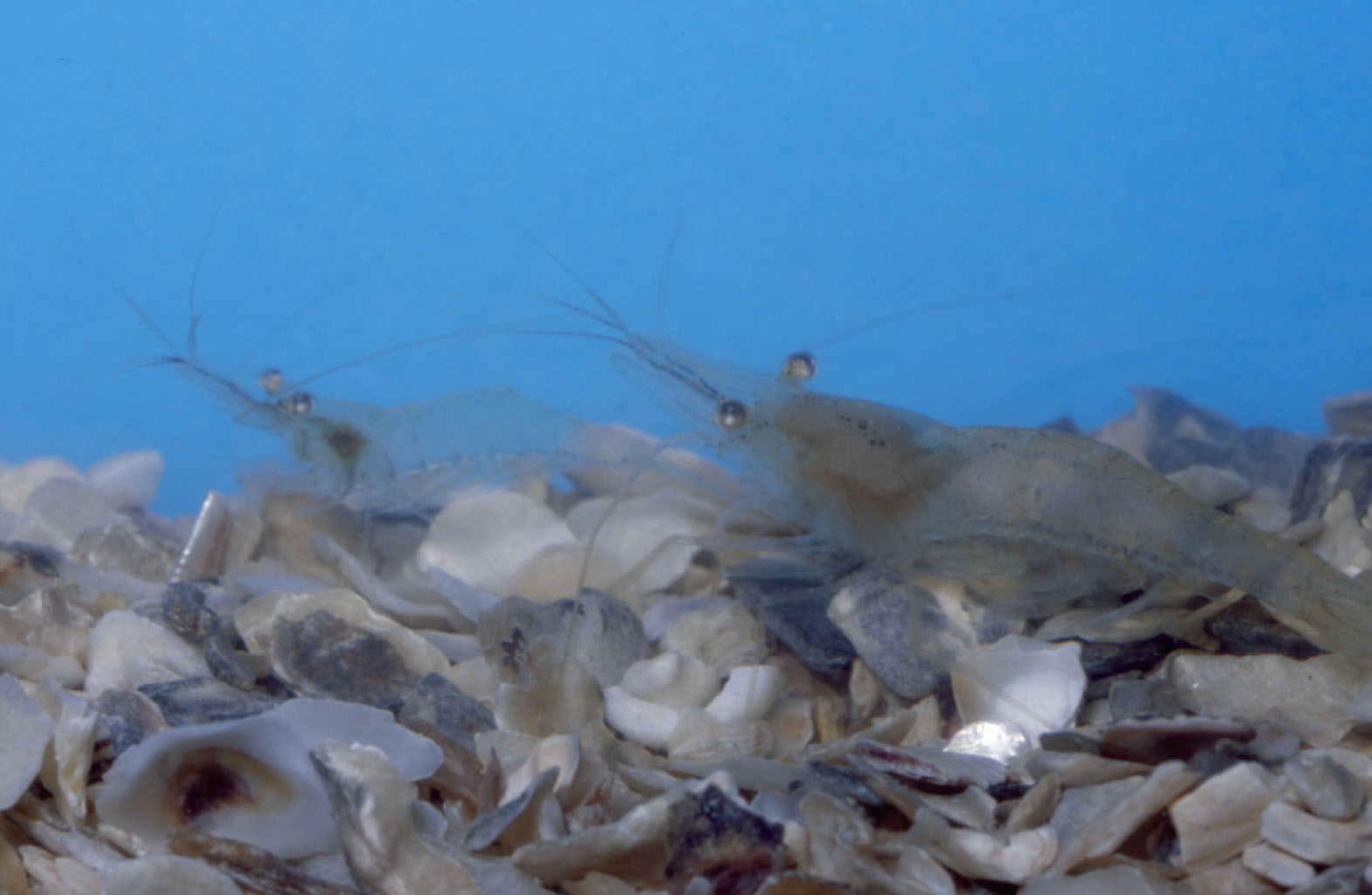
Just after the female molts, she is attractive to males
that touch her with the long whip-like antennal flagellum (smaller male
on left) The male then grasps the female and mating occurs (from
Berg and Sandifer, 1984, Journal of Crustacean Biology)
Two to three hours after mating, the females spawns and
the fertilized eggs (now developing embryos) are attached below the abdomen
of the female for incubation: Jody Caskey, a graduate student in my lab, has determined
that the attractiveness of females declines steadily after the molt during
a period of 8 hours, after which the female spawns spontaneously if denied
access to a male. In some other shrimps, the period of female attractiveness
may be longer, as long as 24 hours (Bauer, 1979a). These observations
may indicate that some compound associated with cuticular hardening is
the chemical signal; alternately, the female may secrete the compound(s)
onto the surface via cuticular pores.
In many insects, such as the fruit fly Drosophila
and certain beetles, males recognize a reproductive female ready to copulate
on the basis of surface hydrocarbons, perceived the chemosensory antennae.
These are contact sex pheromones because they are not volatile: the male
make contact (taste them) with the antennae. We are looking, with
help of funding of the National Oceanic and Atmospheric Administration
(NOAA) Louisiana Sea Grant Program (grant R-SA/03), for such surface compounds
that may be a contact sex pheromone in these shrimps. We are using
a combination of surface chemistry studies, behavioral assays, and morphological
investigation of possible sensilla (sensory setae or hairs) on the shrimp's
antennal flagellum (See Caskey and Bauer, 2005; Bauer and Caskey, 2006)
Publications related to this project:
Caskey, J.L. and R.T.Bauer. 2005. Behavioral tests
for a possible contact pheromone in the caridean shrimp Palaemonetes pugio.
Journal of Crustacean Research 25: 571-576.
Bauer, R.T. and J.L. Caskey. 2006. Antennal flagellar
setae of decapod shrimps: sexual dimorphism and possible role in detection
of contact sex pheromone. Invertebrate Reproduction and Development 49:
51-60.
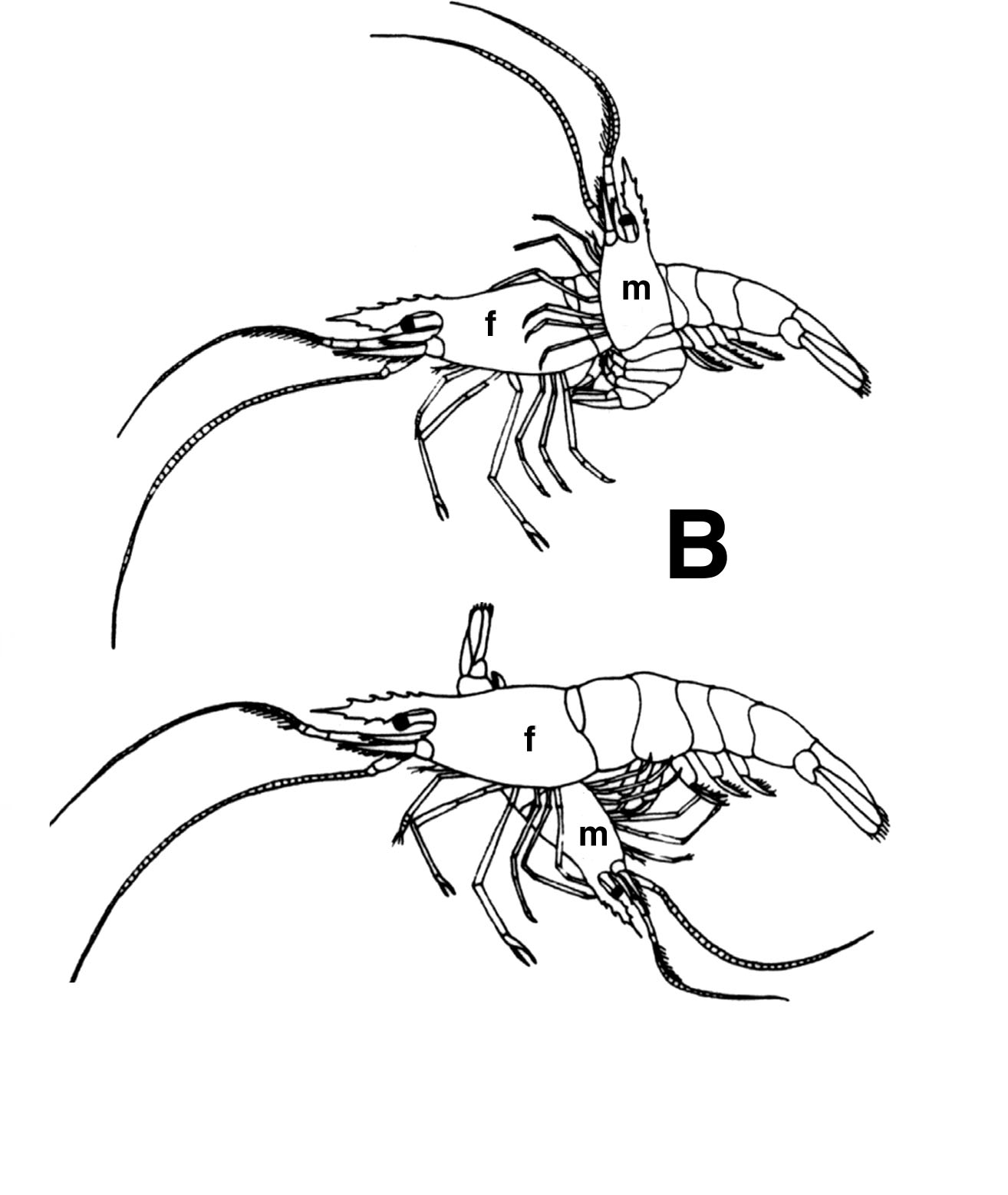 Click here to view P. pugio
mating
Click here to view P. pugio
mating
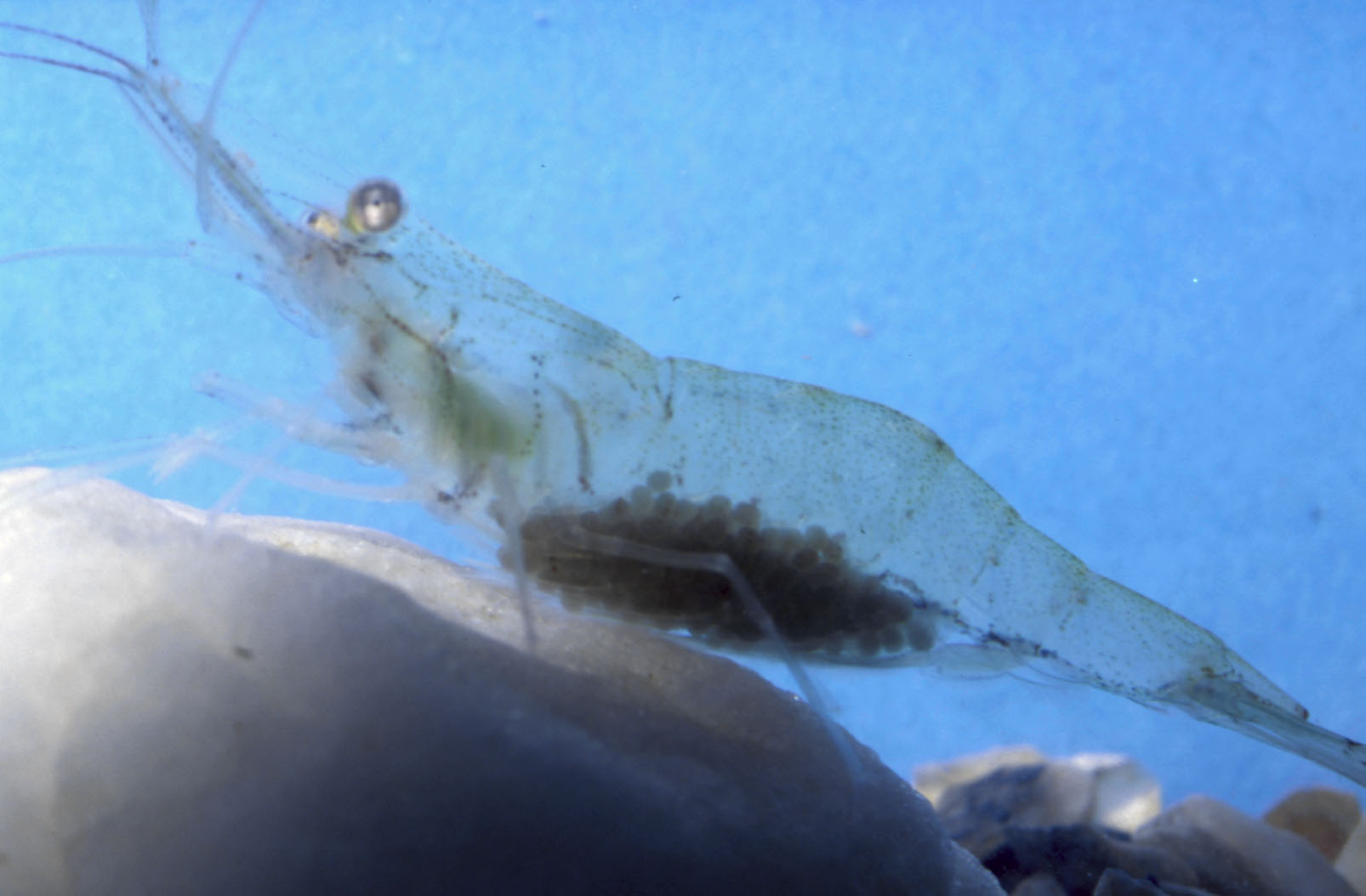
Many behavioral observations on shrimps indicate that
the antennal flagellae of these shrimps are chemotactile, i.e., bear taste
and touch receptors. Males must touch the newly molted female
to recognize her as ready to mate, so the stimulus could be either a textural
one (soft cuticle of the newly molted female) or a chemical one (a non-soluble
substance on the surface of the female). Through a series of behavioral
experiments, we (Caskey and Bauer, 2005, Journal of Crustacean Biology),
determined that neither visual nor textural cues were used by males.
Rather, all the evidence so far indicates that a compound (contact sex
pheromone) on the female's surface is the cue used by males.
